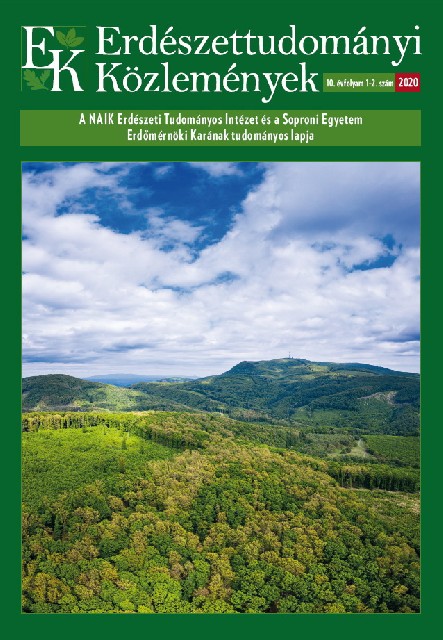| 1. | Farkas H. 1966: Gubacsatkák – Eriophyidae. Fauna Hungariae, Akadémiai Kiadó, Budapest 81(18): 1–164. |
| 2. | Fauna Europaea 2004: Fauna Europaea version 1.3., Taxon Details. Egyéb URL |
| 3. | 61/2017. (XII. 21.) FM rendelet az erdőről, az erdő védelméről és az erdőgazdálkodásról szóló 2009. évi XXXVII. törvény végrehajtásáról. |
| 4. | Korda M., Csóka Gy., Szabó Á. & Ripka G. 2019: First occurrence and description of Aceria fraxiniflora (Felt, 1906) (Acariformes: Eriophyoidea) from Europe. Zootaxa 4568(2): 293–306. DOI: 10.11646/zootaxa.4568.2.5 |
| 5. | Lindquist E. E. & Amrine J. W., Jr. 1996: Systematics, diagnoses for major taxa and keys to families and genera with species on plants of economic importance. In: Lindquist E. E., Sabelis M. W. & Bruin J. (eds): Eriophyoid mites – their biology, natural enemies and control. World crop pests, 6. Elsevier, Amsterdam, Lausanne, New York, Oxford, Shannon, Tokyo, 33–87. DOI: 10.1016/S1572-4379(96)80004-2 |
| 6. | Lindquist E. E. & Oldfield G. N. 1996: Evolution of eriophyoid mites in relation to their host plants. In: Lindquist E. E., Sabelis M. W. & Bruin J. (eds): Eriophyoid mites – their biology, natural enemies and control. World crop pests, 6. Elsevier, Amsterdam, Lausanne, New York, Oxford, Shannon, Tokyo, 277–300. DOI: 10.1016/S1572-4379(96)80018-2 |
| 7. | Navia D., Ochoa R., Welbourn C. & Ferragut F. 2010: Adventive eriophyoid mites: a global review of their impact, pathways, prevention and challenges. Experimental and Applied Acarology 51: 225–255. DOI: 10.1007/s10493-009-9327-2 |
| 8. | Nuzzaci G. & de Lillo E. 1996: Perspectives on eriophyoid mite research. Entomologica Bari 30: 81–100. DOI: 10.15162/0425-1016/673 |
| 9. | Oldfield G. N. 1996: Diversity and host plant specificity. In: Lindquist E. E., Sabelis M. W. & Bruin J. (eds): Eriophyoid mites – their biology, natural enemies and control. World crop pests, 6. Elsevier, Amsterdam, Lausanne, New York, Oxford, Shannon, Tokyo, 199–216. DOI: 10.1016/S1572-4379(96)80011-X |
| 10. | Ripka G. 2007: Checklist of the eriophyoid mite fauna of Hungary (Acari: Prostigmata: Eriophyoidea). Acta Phytopathologica et Entomologica Hungarica 42(1): 59–142. |
| 11. | Ripka G. 2009a: Növényvédelmi akarológia. Kártevő és hasznos atkák. Agroinform Kiadó, Budapest, 1–161. |
| 12. | Ripka G. 2009b: New shrub-infesting Floracarus, Acaphyllisa and Anthocoptes species from Hungary (Acari: Prostigmata: Eriophyoidea). Acta Phytopathologica et Entomologica Hungarica 44(1): 75–86. |
| 13. | Ripka G. 2009c: New tree-infesting Cecidophyes, Eriophyes, Rhyncaphytoptus and Aceria species from Hungary (Acari: Prostigmata: Eriophyoidea). Acta Phytopathologica et Entomologica Hungarica 44(1): 87–100. |
| 14. | Ripka G. 2010a: Jövevény kártevő ízeltlábúak áttekintése Magyarországon (I.). Növényvédelem 46(2): 45–58. |
| 15. | Ripka G. 2010b: A new Rhinophytoptus and a new Epitrimerus species from Hungary (Acari: Prostigmata: Eriophyoidea). Acta Phytopathologica et Entomologica Hungarica 45(1): 149–157. |
| 16. | Ripka G. 2010c: A new Calepitrimerus species and new gall mite records from Hungary (Acari: Prostigmata: Eriophyoidea). Acta Phytopathologica et Entomologica Hungarica 45(2): 383–389. |
| 17. | Ripka G. 2011: New Quercus-feeding Brevulacus species, redescription of Rhyncaphytoptus cerrifoliae Farkas and new eriophyoid mite records from Hungary (Acari: Prostigmata: Eriophyoidea). Acta Phytopathologica et Entomologica Hungarica 46(1): 129–138. |
| 18. | Ripka G. 2014: A new Aceria species (Acari: Prostigmata: Eriophyoidea) on Xeranthemum annuum from Hungary. Acta Phytopathologica et Entomologica Hungarica 49(1): 57–65. |
| 19. | Ripka G. 2017: A new Aculops species (Acari: Prostigmata: Eriophyoidea) on Stachys recta (Lamiaceae) from Hungary. Biologia 72(5): 542–547. DOI: 10.1515/biolog-2017-0055 |
| 20. | Ripka G. & de Lillo E. 1997: New data to the knowledge on the eriophyoid fauna in Hungary (Acari: Eriophyoidea). Folia Entomologica Hungarica 58: 147–157. |
| 21. | Ripka G. & Csóka Gy. 2010: New Quercus-infesting Bariella and Glyptacus species and redescription of Aceria cerrigemmarum (Nalepa) from Hungary (Acari: Prostigmata: Eriophyoidea). Acta Phytopathologica et Entomologica Hungarica 45(1): 223–234. |
| 22. | Ripka G. & Szabó Á. 2011: New plant-inhabiting mite records from Hungary (Acari: Mesostigmata, Prostigmata and Astigmata). Acta Phytopathologica et Entomologica Hungarica 46(2): 261–266. |
| 23. | Rosenthal S. S. 1996: Aceria, Epitrimerus and Aculus species and biological control of weeds. In: Lindquist E. E., Sabelis M. W. & Bruin J. (eds): Eriophyoid mites – their biology, natural enemies and control. World crop pests, 6. Elsevier, Amsterdam, Lausanne, New York, Oxford, Shannon, Tokyo, 729–739. DOI: 10.1016/S1572-4379(96)80049-2 |
| 24. | Smith L., de Lillo E. & Amrine J. W. 2010: Effectiveness of eriophyid mites for biological control of weedy plants and challenges for future research. Experimental and Applied Acarology 51: 115–149. DOI: 10.1007/s10493-009-9299-2 |
| 25. | Soika G. & Kozak M. 2013: Eriophyes species (Acari: Eriophyoidea) inhabiting lime trees (Tilia spp.: Tiliaceae) – supplementary description and morphological variability related to host plants and female forms. Zootaxa 3646(4): 349–385. DOI: 10.11646/zootaxa.3646.4.3 |
| 26. | Xue X.-F., Dong Y., Deng W., Hong X.-Y. & Shao R. 2017: The phylogenetic position of eriophyoid mites (superfamily Eriophyoidea) in Acariformes inferred from the sequences of mitochondrial genomes and nuclear small unit (18S) rRNA gene. Molecular Phylogenetics and Evolution 109: 271–282. DOI: 10.1016/j.ympev.2017.01.009 |
